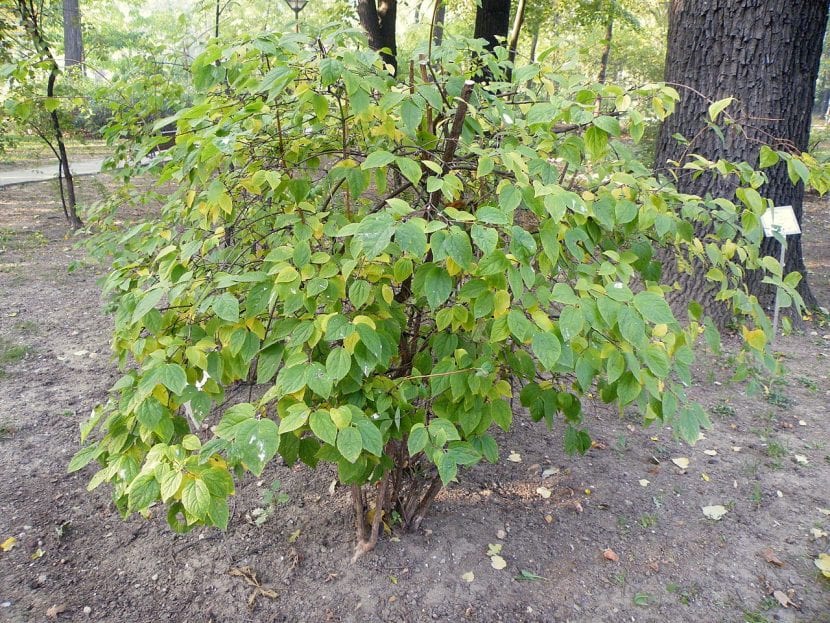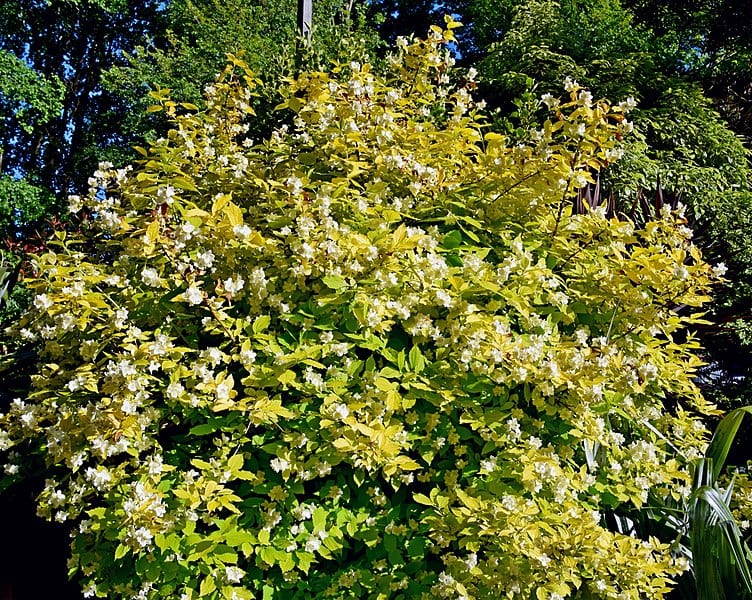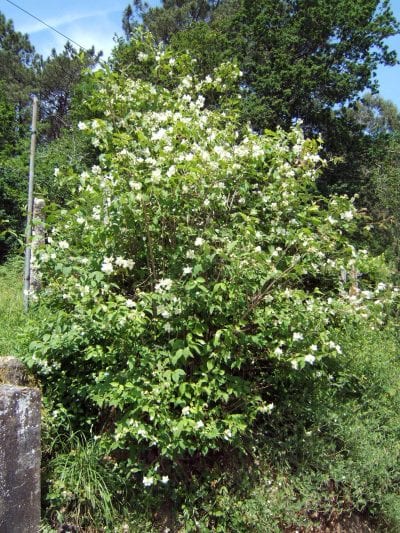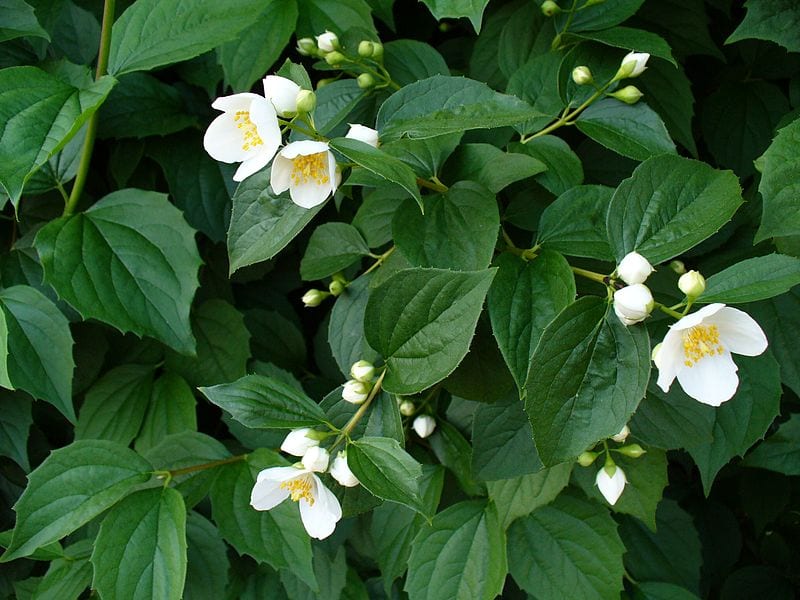
When living in an area where winter is especially hard for the vast majority of plants, it is sometimes very difficult to find one that really suits our needs. But fortunately the celinda It is one of those that, without a doubt, will be the most beautiful in our favorite corner.
Its leaves are very pretty, but Its flowers are precious as they also give off a sweet smell reminiscent of orange blossom. Can you imagine passing by and feeling it? We invite you to make your illusion a reality. We take care of telling you how to take care of it in this article. 🙂
Origin and characteristics

Our protagonist it is a deciduous shrub (loses leaves in autumn / winter) whose scientific name is Philadelphus coronarius. It is popularly known as celinda, celindo, filadelfo, false jasmine, false orange tree and even syringe. It is native to southern Europe, although today it can be found in practically all temperate or cold-temperate regions of the world.
It reaches a height of 1 to 3 meters, and a width of 1,5-2m. Its leaves are oval or elliptical, thin, green in color. The flowers are white, aromatic, measure about 3cm in diameter and are grouped in clusters of up to ten. These appear in May in the northern hemisphere. The fruit is a tetrameric capsule inside which we will find small seeds in great numbers.
What are their cares?

Philadelphus coronarius 'Aureus'
If you dare to have a copy, we recommend that you provide it with the following care:
Location
Celinda must be abroad, either in full sun or in semi-shade.
Earth
- Flower pot: universal culture substrate mixed with 30% perlite. You can get the first here and the second for here.
- Garden: it is indifferent as long as it has good drainage and is fertile.
Irrigation
It will depend on the area and the weather, but to give you a general idea It is advisable to water 3 times a week in summer and 2 times / week the rest of the year. If in your area it usually rains frequently you will have to decrease the frequency, or on the contrary, if it is very dry, increase it.
Subscriber
From early spring to late summer or early fall must be paid with ecological fertilizers once a month for good growth and better development.
Planting or transplanting time
You can plant your celinda in the garden in spring, as soon as the risk of frost has passed. If it is potted, transplant it every two years, also in the flower season.
Pruning
After flowering, remove diseased, dry or weak stems, and trim those that have grown in excess giving it a gangly look. Use pruning shears for the thinner ones, and a small hand saw for the thicker ones. Do not forget to disinfect the tools before and after use, for example with alcohol from a pharmacy or with a few drops of dishwasher.
Multiplication

It multiplies by cuttings in spring, as follows:
- First you must cut a piece of branch of about 40cm.
- Then, impregnate the base with homemade rooters.
- Next, plant it in a pot with a universal growing medium mixed with 30% perlite that you will have previously watered.
- Then, place the pot outside, in semi-shade.
- Finally, water regularly so that the soil does not lose moisture.
Thus, will emit its own roots after 1-2 months. Anyway, to increase the chances of success, I recommend sprinkling copper or sulfur as this will prevent fungal infections.
Pests
It can be affected by:
- Mealybugs: either cottony or limpet-like. You will see them especially on the underside of the leaves and on the most tender stems. They feed on plant cells, but they can be fought well with insect bugs, or even diatomaceous earth (the dose is 35g per liter of water).
- Aphids: they are parasites that measure about 0,5cm that adhere to the underside of the leaves and the flowers to feed on them. They can be yellow, brown or green, and are fought with specific insecticides. They can be controlled with yellow sticky traps.
Management
If it is watered excessively, or if the leaves get wet, it can be affected by powdery mildew o roya which is treated with fungicides. In any case, the best cure is prevention, and for that watering must be controlled and never wet leaves or flowers.
Rusticity
It's very tough. It can withstand up to -10ºC.

What did you think of the celinda? As we have seen, it is a very interesting plant both to have in a pot and in the garden, since it is very easy to care for and adaptable. I hope you can enjoy it a lot because, the truth is, it is very worth reserving a space for it in the garden or patio.
It seems to me a very accurate description of a plant that I have known since childhood. The tips on pruning are adequate.
Hi Marisa.
Thanks for your comment. We are glad you liked it.
regards
Please, where can I buy Celinda phfiladelplus coronary????
Hello Svitlana.
We recommend you look in online plant stores 🙂
A greeting.
I would love to get one, I love it from my childhood
Hello Leonor.
We recommend you ask in nurseries in your area, or in online plant stores. On the ebay website or on the amazon website they sometimes sell seeds in case you are interested.
Greetings.